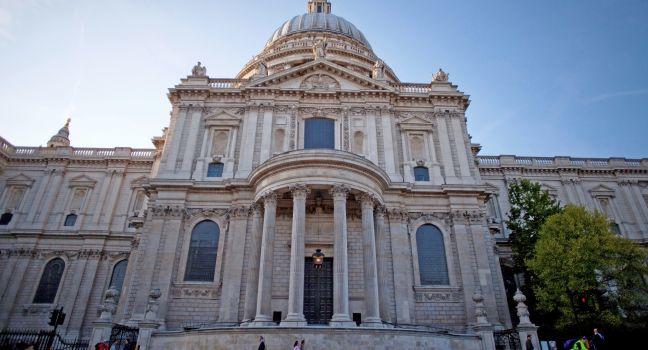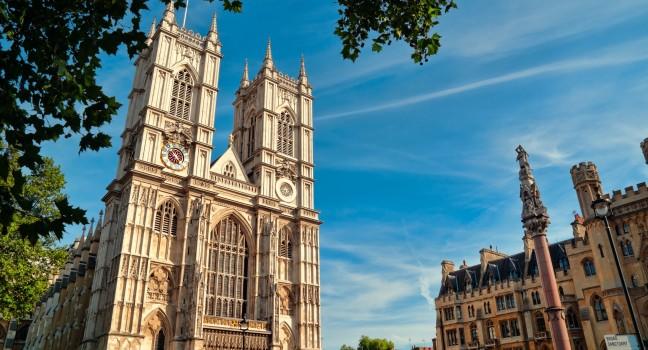For centuries, this iconic building has represented London's spirit of survival and renewal, and it remains breathtaking, inside and out. Sir Christopher Wren started planning the current cathedral in 1666, immediately after the previous medieval building, founded in 1087, was destroyed in the Great Fire, hence the word resurgam ("I shall rise again") inscribed on the pediment of the south door. St. Paul's again became a symbol of the city's resilience during the Blitz, when local volunteers risked death to put out a blaze on the dome (despite these efforts, much of the cathedral's east end and its high altar were destroyed). It has often been the scene of great state occasions, such as Winston Churchill's funeral and the wedding of King Charles III and Princess Diana.
Construction started in 1675 and took 35 years to finish. It was actually Wren's third design: the first was rejected for being too modern; the second for being too modern and too Italian, that is, Catholic (you can see the 20-foot "Great Model" of this design in the crypt). Despite mollifying the Anglican clergy with the promise of a traditional English spire, Wren installed a neoclassical triple-layered dome, the second-largest cathedral dome in the world after St. Peter's in Rome.
The interior is a superb example of the English baroque. Climb 257 steps up the Geometric Staircase, a perfectly engineered stone spiral, to the Whispering Gallery, so named because a whisper against one wall can be heard on the wall 112 feet opposite. Another 119 steps up is the Stone Gallery, which encircles the exterior of the dome and provides panoramic views over London. If you have a head for heights, tackle another 152 steps to the small Golden Gallery, an observation platform at the dome's highest point. At 278 feet above the cathedral floor, it offers even more spectacular vistas. Back on the ground, in the south choir aisle, you'll find the grave of John Donne, the poet who was dean of St. Paul's from 1621 until his death in 1631. His marble effigy is the oldest memorial in the cathedral and one of the few to survive the Great Fire. The intricate lively figures on the choir stall nearby are the work of master carver Grinling Gibbons, who also embellished the Wren-designed great organ. Behind the high altar is the American Memorial Chapel, dedicated to the 28,000 American GIs stationed in the United Kingdom during World War II. Among the notables buried in the crypt are the Duke of Wellington, Admiral Lord Nelson, Sir Joshua Reynolds, Henry Moore, and Wren himself. The Latin epitaph above his tomb fittingly reads, "Reader, if you seek his monument, look around you."
Free, introductory, 20-minute talks are offered regularly throughout the day. Free, 60-minute, guided tours take place Monday through Saturday at 10, 11, 1, and 2; reserve a place at the welcome desk when you arrive. Save £3 per admission ticket and get fast-track entry by booking online.





